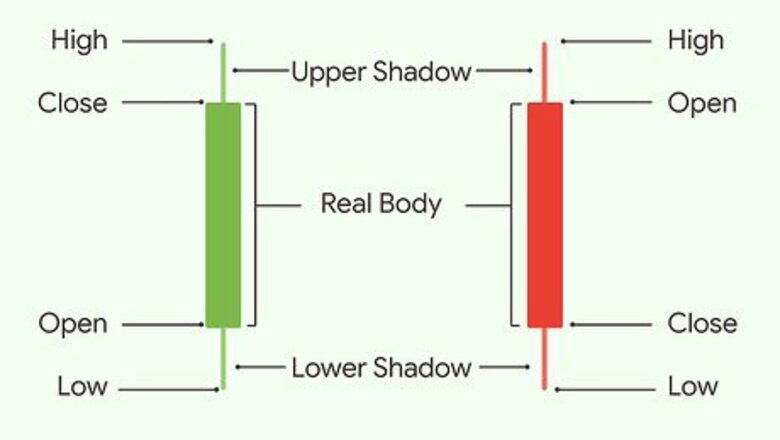
views
Reading the Parts of a Candlestick
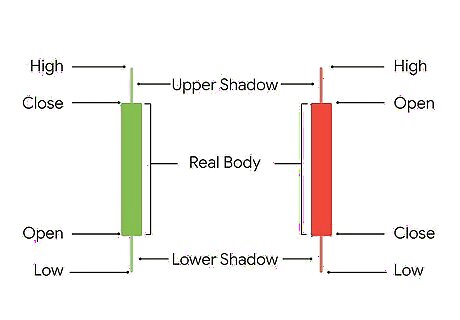
Note that the market price is going up if the candlestick is green or blue. The color of the candlestick is usually green or blue if the market is trending upwards. This can vary depending on what chart you are looking at.Tip: You can often change the default colors in different apps or platforms to customize the way you view candlestick charts. If the candlestick chart is black and white, then the body will be hollow for markets that went up.
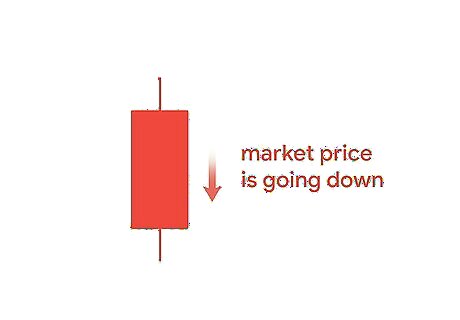
Recognize that the market price is going down if the candlestick is red. The color of the candlestick is usually red if the market is trending downwards. This signifies that the market price closed lower than it opened. If the candlestick chart is black and white, then the body will be filled in with black for markets that went down.
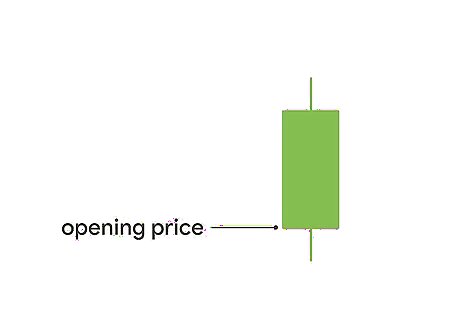
Look for the opening price at the bottom of a green candlestick or the top of a red one. The opening price is at the bottom of the body if the market is trending upwards. It is at the top of the body if the market is going down. It’s important to make sure you know what the candlestick colors represent before you check the open and close prices to ensure you aren’t getting them confused. Always double-check the settings or the color key for the app or platform you are looking at the charts in.
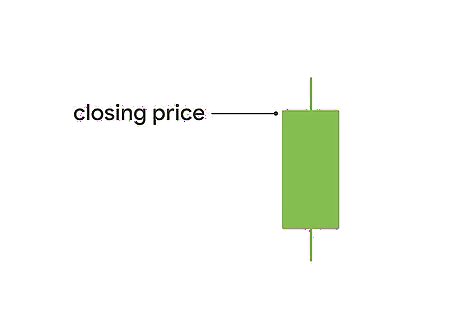
Find the closing price at the top of a green candlestick or the bottom of a red one. The closing price is the top of the body if the market price is going up. It is the bottom of the body if the market is trending down. For instance, if you are looking at a candlestick with a red body, then you know the price is going down, which means that the closing price is at the bottom of the candlestick’s body instead of at the top.
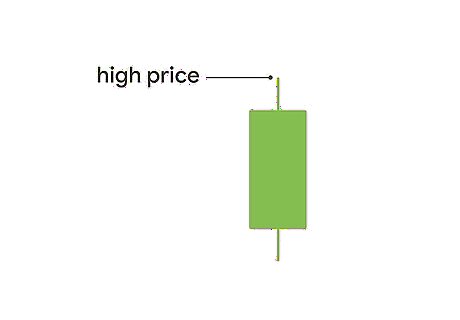
Inspect the upper shadow of the candlestick to determine the high price. The shadow is a line behind the body of the candlestick and is also sometimes known as the “wick” of the candlestick. Look at the upper line to see the highest price for the market. If there is no upper shadow, then the highest price is the same as the opening or closing price, depending on whether the market is trending up or down.
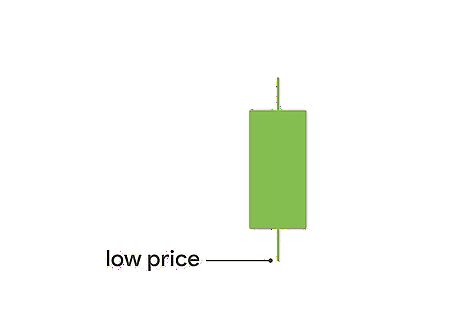
Examine the lower shadow of the candlestick to determine the low price. Check the line coming out of the bottom of the body to see what the lowest price for the market was. This line is called the lower wick or lower shadow. If there is no lower shadow, then the lowest price is the same as the opening or closing price, depending on if the market went down or up.
Interpreting Different Candlestick Shapes
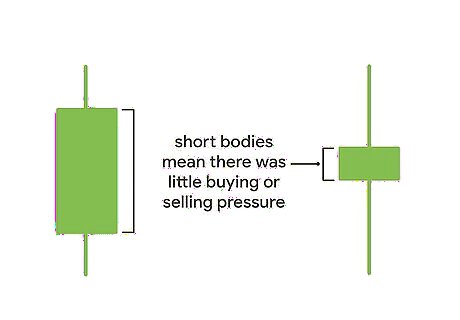
Recognize that short bodies mean there was little buying or selling pressure. Candlesticks with short bodies represent little price movement. Candlesticks with long bodies represent strong buying or selling pressure and a lot of price movement.Tip: If a long-bodied candlestick has no shadow, it is called a Marubozu candlestick. Depending on whether the market closed lower or higher than it opened, this means that the sellers or buyers controlled all of the price action for the trade from the first trade to the last trade. The further the closing price of a long-bodied candlestick is above the opening price, the more aggressive the buyers were for that market. If the closing price is far below the opening price, then it means the sellers were more aggressive.
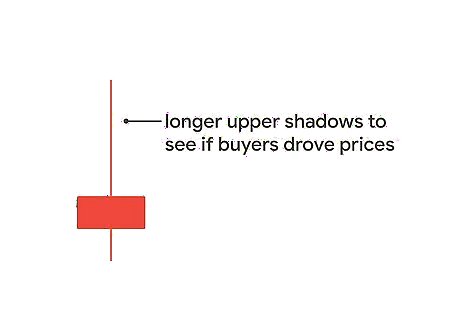
Look for longer upper shadows to see if buyers drove prices. Candlesticks with long upper shadows and short lower shadows show that buyers drove up prices during trading but sellers forced them down by closing time. This helps you understand the activity that influenced trading of the market. If a candlestick has both a long upper and lower shadow with a short body, then it is called a spinning top. This kind of candlestick indicates that prices moved up and down a lot during trading, but neither buyers or sellers dominated the trading session.
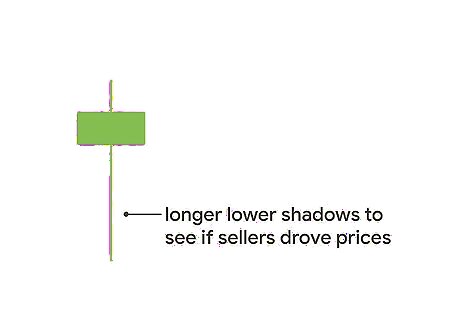
Search for longer lower shadows to see if sellers drove prices. Candlesticks with short upper shadows and long lower shadows show that sellers drove prices down during trading but buyers caused the prices to rise close to the end of trading. This lets you know how the price action was influenced during trading. If you see a spinning top candlestick with shadows of equal lengths after a long incline or decline period for a market, it can sometimes represent a reversal in the trend.
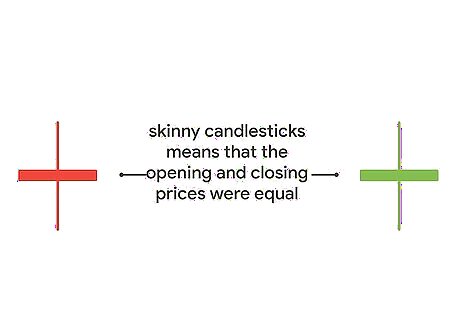
Note that skinny candlesticks mean that the opening and closing prices were equal. Any candlestick that has a very narrow body is known as a “doji” candle. These often indicate a turning point in the market, mainly if it appears after other candlesticks for that market that have long bodies. For example, if a doji candlestick appears after a long declining candlestick, then it means that selling pressure is decreasing and an upward trend might be coming. If it appears after a long upward trending candlestick, then it means that buying pressure is decreasing and the market might start trending downwards. Doji candlesticks that have both long upper and lower shadows indicate that there is a lot of indecision in the market.
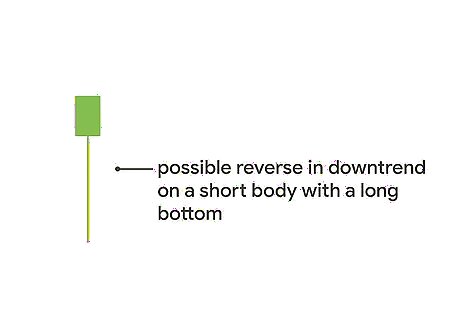
Look for a short body with a long bottom wick to spot a possible reverse in downtrend. These are called “hammers” because the wick looks like the handle and the body looks like the head of the hammer. Hammers indicate a possible reversal in a downtrend, especially when seen next to at least 1 week of candlesticks that show the market going down. Keep in mind that these shapes are more significant when viewing charts over a longer time period. For instance, if you see a hammer on a 1-day candlestick chart, it isn’t as important as if you see it on a 1-week uptrend. To identify possible changes in trends by spotting certain candlestick shapes, it is always best to look at a candlestick chart for the last 1-4 weeks of activity.
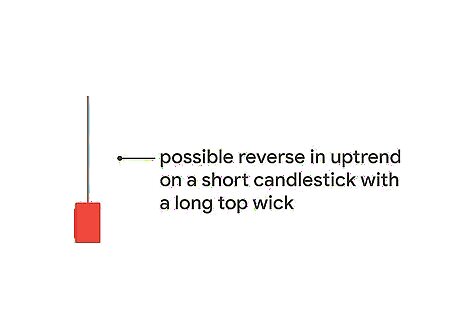
Check for a possible reverse in uptrend on a short candlestick with a long top wick. These are called “shooting stars” and are the exact opposite of hammers in appearance. Shooting stars indicate a possible reversal in an uptrend, especially when you see one appear when you are looking at at least 1 week of candlesticks that show the market going up. To identify possible changes in trends by spotting certain candlestick shapes, it is always best to look at a candlestick chart for the last 1-4 weeks of activity.




















Comments
0 comment